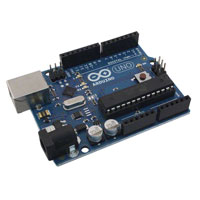- The top of the minute is marked by a half-second-long beep.
- The top of the hour is marked with a one second-long beep, followed by nine seconds of silence.
- The 29th second of a minute is always omitted (no beep).
- Between one and sixteen seconds past the minute (except at the top of the hour), CHU transmits the difference between UT1 and Coordinated Universal Time (UTC) by using split tones. For positive DUT1 values from +0.1 to +0.8 s, seconds 1 through 8 are split. For negative DUT1 values from −0.1 to −0.8 s, seconds 9 through 16 are split.
- Between 31 and 39 seconds past the minute inclusive, the once-per-second tones are reduced to 10-millisecond "ticks" while a digital time code is transmitted. The digital time code is formatted so that a Bell 103-compatible 300-baud modem can decode it,[2] and CHU is the only time signal station that uses this format for its time code transmissions.
- For the last 10 seconds of each minute (seconds 50 to 59), the once-per-second tones are again cut to 10 milliseconds each, while CHU transmits a brief voice station identification, followed by voice announcements of the next minute in UTC, alternating between French and English. French announcements, using the voice of Radio-Canada news anchor Simon Durivage, are transmitted first on the odd minutes, while English announcements, voiced by former CBC Radio announcer Harry Mannis, come first on the even minutes.
The digital time code sends 10 characters at 300 bits per second using 8N2 asynchronous serial communication. This follows the Bell 103 standard, a 2225 Hz tone to represent a mark (1 bit) and 2025 Hz tone for a space (0 bit). Immediately after the 10 ms tick, a mark tone is sent until 133.3̅ ms, then 110 data bits, ending at precisely 500 ms. The final stop bit is extended by 10 ms of mark tone to ensure it is detected reliably, and the final 490 ms of the second are silent.[2] The time of day (day of year through second) is transmitted twice during each second from 32 to 39. During second 31, additional information (year, DUT1, daylight saving time, and leap second warning bits) is transmitted.





